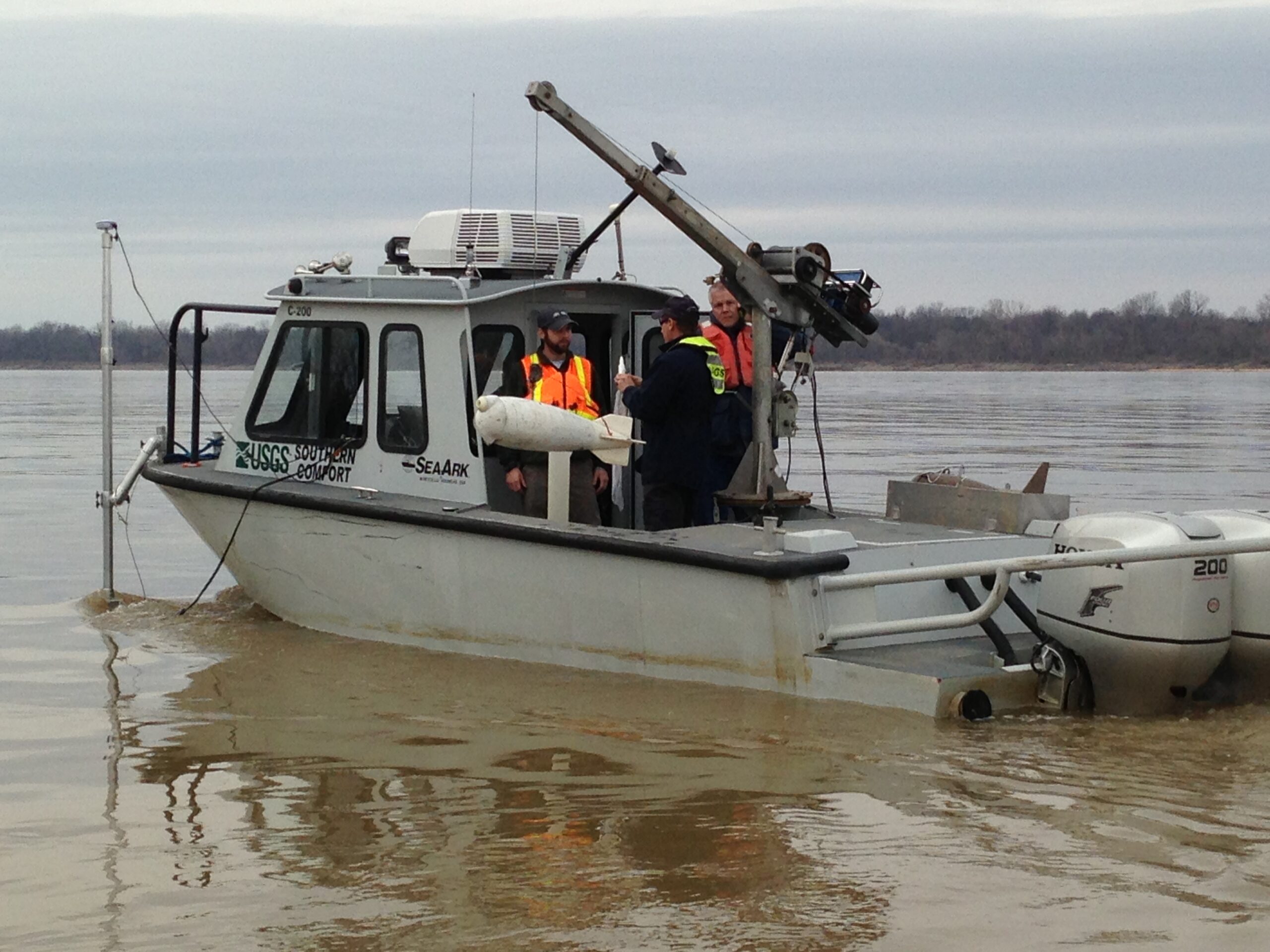NCCOS scientists are forecasting this summer’s Gulf of Mexico hypoxic zone or “dead zone”—an area of low to no oxygen that can kill fish and other marine life— to be approximately 5,364 square miles, just below the five-year average measured size of 5,380 square miles. The annual prediction is based on the U.S. Geological Survey (USGS) river-flow and nutrient data.

USGS water-quality sampling on the Mississippi River at Vicksburg, MS.
Credit: Mike Manning, USGS Lower Mississippi-Gulf Water Science Center.
When the excess nutrients reach the Gulf, they stimulate an overgrowth of algae, which eventually die and decompose, depleting oxygen as they sink to the bottom. The dead zone in the Gulf of Mexico affects nationally important commercial and recreational fisheries and threatens the region’s economy.
NOAA issues a dead zone forecast each year, and refines the models used by the Hypoxia Task Force to set nutrient reduction targets and better understand the link between hypoxia and nutrients. A NCCOS-supported monitoring survey is scheduled to confirm the size of the 2022 Gulf dead zone in late July, a key test of the accuracy of the models.
This is the fifth year NCCOS is producing an independent forecast, the culmination of a multi-year academic-federal partnership to develop a suite of hypoxia forecast models. The partnership included teams of researchers at the University of Michigan, Louisiana State University, William & Mary’s Virginia Institute of Marine Science, North Carolina State University, Dalhousie University, and USGS. The NOAA forecast integrates the results of these multiple independent models into a separate average forecast and is released in coordination with these external groups.
NOAA and its partners continue to develop additional hypoxia forecast capabilities to understand impacts on living marine resources, including a tool to visualize future scenarios of fish biomass with and without nutrient reduction actions.
 Official websites use .gov
A .gov website belongs to an official government organization in the United States.
Official websites use .gov
A .gov website belongs to an official government organization in the United States. Secure .gov websites use HTTPS
A lock or https:// means you’ve safely connected to the .gov website. Share sensitive information only on official, secure websites.
Secure .gov websites use HTTPS
A lock or https:// means you’ve safely connected to the .gov website. Share sensitive information only on official, secure websites.